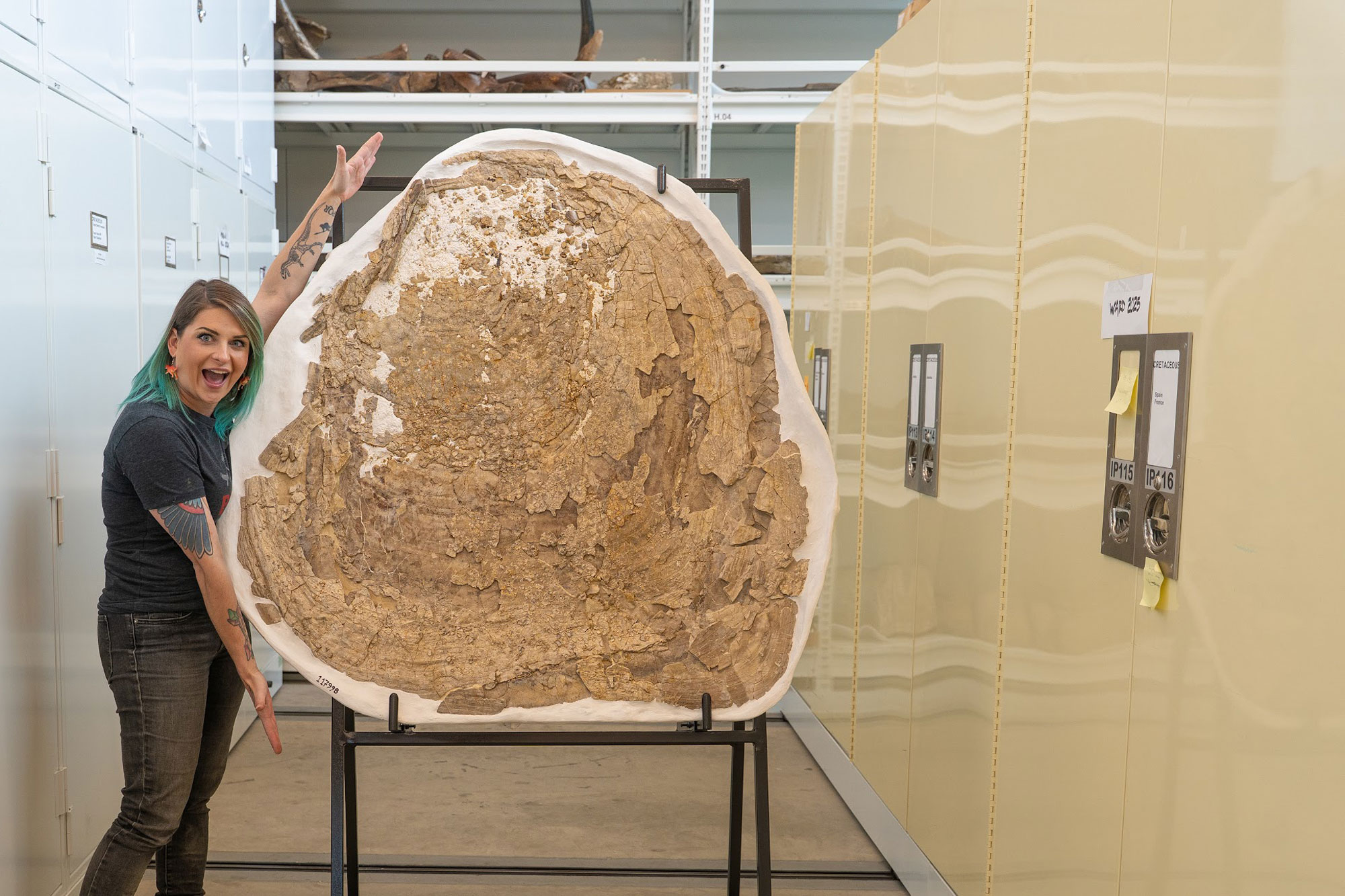

Among the feast of fossils at the Burke Museum of Natural History and Culture, one of the newer additions is a 4.5-foot-long, 80-million-year-old giant clam the museum staff have affectionately dubbed “Chowder.”
Christian Sidor, curator of the Burke’s vertebrate paleontology department, had been looking for holes in the museum’s collection when he reached out to longtime collaborator and fossil hunter Anthony Maltese. Maltese has access to privately-owned fossil sites across the Midwest and had discovered the clam a few years earlier in the chalk deposits of western Kansas, an area that was covered with an inland sea during the Cretaceous period.
“He was keeping it to give to the right museum,” says Kelsie Abrams, fossil lab manager at the Burke (pictured at top).
Last summer, during the Burke team’s fieldwork season, Maltese handed Chowder over to Sidor and Abrams. The bivalve came shattered, in bags filled with dirt and rocks—a prehistoric jigsaw puzzle.
Back in Seattle, and over many months, Abrams led the restoration with the help of more than a dozen volunteers. “Altogether, it took about 400 hours,” she says. “I think I spent about 140 hours on it just myself.” She would hand a volunteer a plastic sack and say, “Here’s a bag of clam, go find out where the pieces go.”
“If you like puzzles,” she says. “It was really satisfying.”
Despite the painstaking assembly, Chowder came back together beautifully. Now mounted on wheels, it can be rolled out for public display. “It’s surprisingly light,” Abrams added. “Maybe 100 pounds or less.”
There’s still mystery surrounding how these massive clams lived. Some theories suggest they had a large siphon foot, anchoring them to the seafloor like modern-day geoducks. If alive today, a clam like Chowder could hold hundreds of pounds of meat.
But the clam wasn’t the only exciting fossil the Burke team brought home in the summer of 2024. “We also discovered and brought back pairs of wings of two different pterosaurs, fish fossils, and—the coolest, I think—the skull of a mosasaur [a giant aquatic reptile] and parts of its body,” Abrams says. “I named that ‘Ahhnold.’” At the end of the dig, the team winterized the mosasaur’s site and returned this summer to collect the rest of its remains.
Both Chowder and Ahhnold have generated waves of excitement, not just at the museum but online as well—a short video on Chowder has drawn about 2 million views.